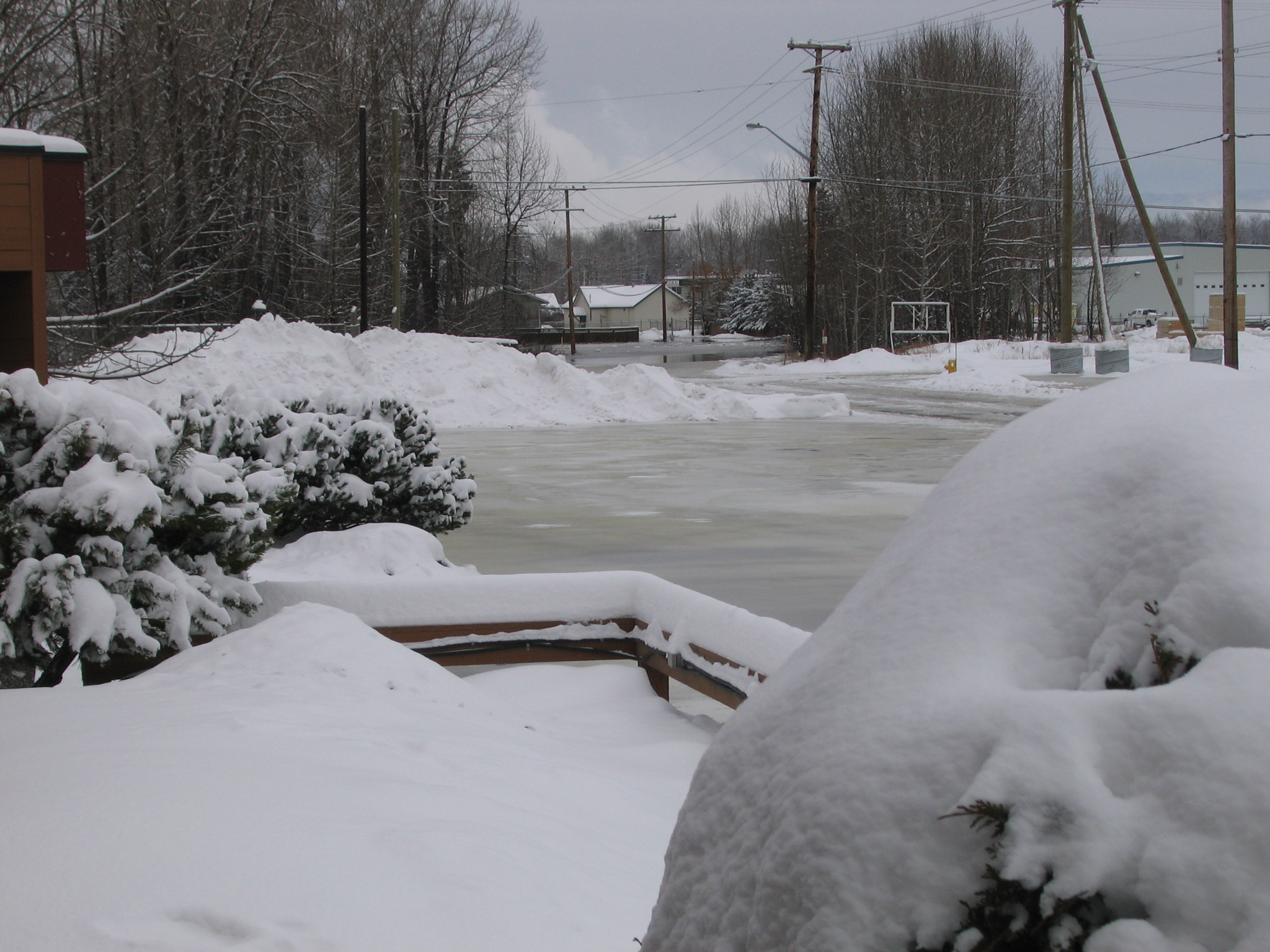Local State Of Emergency And Evacuation Alert
By 250 News
Tuesday, December 11, 2007 03:59 PM

Ice and water on River Road
The City of Prince George continues to warn residents and businesses along the Nechako River of the potential for localized flooding. An expanded local state of emergency has been declared and includes the following areas:
Pulp Mill Road:
Nechako River south boundary
Pulp Mill road north boundary
Cameron Street Bridge west boundary
Fraser River east boundary
River Road:
Cameron Street bridge west boundary
Fraser River east boundary
Nechako River north boundary
1st Ave south boundary
North Nechako Road:
Cameron Street bridge east boundary
North Nechako road north boundary
City Limits west boundary
Nechako River south boundary
Ospika Blvd:
East boundary of Wilson Park
Nechako River north boundary
Foothills Bridge west boundary
Ospika Blvd south boundary
The City of Prince George has declared an evacuation alert for the following areas:
- McAloney Crescent
- Ongman Road
- River Road Pulpmill Road South Side
- Foley Crescent
- Kellher Road
- Tomlin Road
- Richard Road
- Preston Road
- Delhaven Subdivision
- Stevens Drive
The evacuation alerts are issued to notify residents of the potential for loss of life from unstable river conditions.
The City has asked residents in the affected areas to prepare to leave on very short notice. Should an evacuation order be issued, a telephone number will be provided to those affected that may need transportation from the area.
A Reception Centre has been set up at the Prince George Civic Centre.
Previous Story - Next Story
Return to Home









